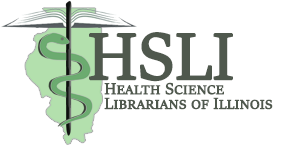OCLC Research recently released the report IMLS Focus: Engaging Communities. The document is a summary of last summer’s Institute of Museum and Library Services conference, “Engaging Communities”. The conference drew participants from a wide cross-section of libraries-academic, government, public-and focused on a number of the current barriers to community engagement. Topics discussed included understanding the various needs of library users, particularly if the demographics of the community that a library serves changes; forming partnerships with library organizations and government agencies at both the state and federal levels; ensuring that communication with the public is as clear and direct as possible, so that it can reach the greatest number of people; and periodically reassessing library needs and the resources available for meeting those needs, and adjusting outreach strategies accordingly.
At the end of the conference, participants were asked to reflect on the ideas they had discussed and the issues that had arisen in those talks, via three “takeaway” questions. The questions, and the consensus responses that participants offered, are below.
What are your strategies for assessing and responding to needs?
- When conducting needs assessments, seek the input of not just library staff, but also community members. Identify a group of frequent library patrons and community leaders from whom you can regularly collect candid feedback.
- Learn more about the demographics and specific needs of the population your library serves, either by gathering and analyzing information or by using data that another organization, such as the U.S. Census Bureau, has already collected. Become especially familiar with underserved groups and overcome any pre-existing notions that staff might have about the characteristics and needs of those groups.
- Become familiar with the community organizations with which your library can collaborate to meet the needs of all people the library serves. These include literacy councils, state and federal agencies, and professional organizations, and they should not be limited to library-focused groups.
- After forming relationships and collecting information, make certain that your library actually acts upon the data, through analyzing them and devising appropriate strategies for meeting the user needs identified.
How do you cultivate and strengthen partnerships?
- Maintain an open mind regarding the role that your library can play in meeting the needs of particular populations within the community. Remember that non-library organizations might be better equipped to address certain issues. Avoid becoming involved with too many short-term projects.
- Before reaching out to potential partners, research the groups to ensure that they have long-term objectives similar to yours. This will make it more likely your partners will continue working with you beyond just a single project.
- Focus on local organizations that already have a working relationship with the groups you are trying to reach. In building relationships outside of the community and expanding the scope of a project, seek assistance from state libraries, which can facilitate partnerships with relevant institutions, and federal agencies, which can provide information on key laws and regulations.
- During the course of a project, monitor its success, through metrics and other measurements, and make adjustments as needed, especially to account for specific local needs.
How can local projects and programs help inform the rest of the profession?
- A more-thorough grasp of community needs can increase opportunities for the library as a whole to engage with a larger segment of the population, while also giving staff members professional-development opportunities through the various projects. This mindset can help a library look beyond just its internal issues and consider the institution’s broader role in the community it serves.
- In planning and implementing these projects, libraries need to take a long-term approach that will lead to systematic change, rather than addressing just the immediate needs of targeted groups. Because these efforts will require lengthy partnerships, libraries need to be careful in selecting the organizations with which they collaborate, particularly since these partnerships will ultimately affect a library’s reputation.
- Libraries need to familiarize themselves with the “markets” that they will target. While a library wants to appeal to as many people as possible, trying to meet the needs of every single group or individual will make the message less-focused.
- The feasibility and potential long-term impact of a project should be addressed at the beginning, particularly by using the data collected on community needs. Taking such an approach will ensure that a library can track the extent to which the project is meeting its goals and whether a specific initiative should be redefined or abandoned altogether.
- As much funding as there is for the project, the long-term success will be determined ultimately by staff initiative and engagement with partners.
